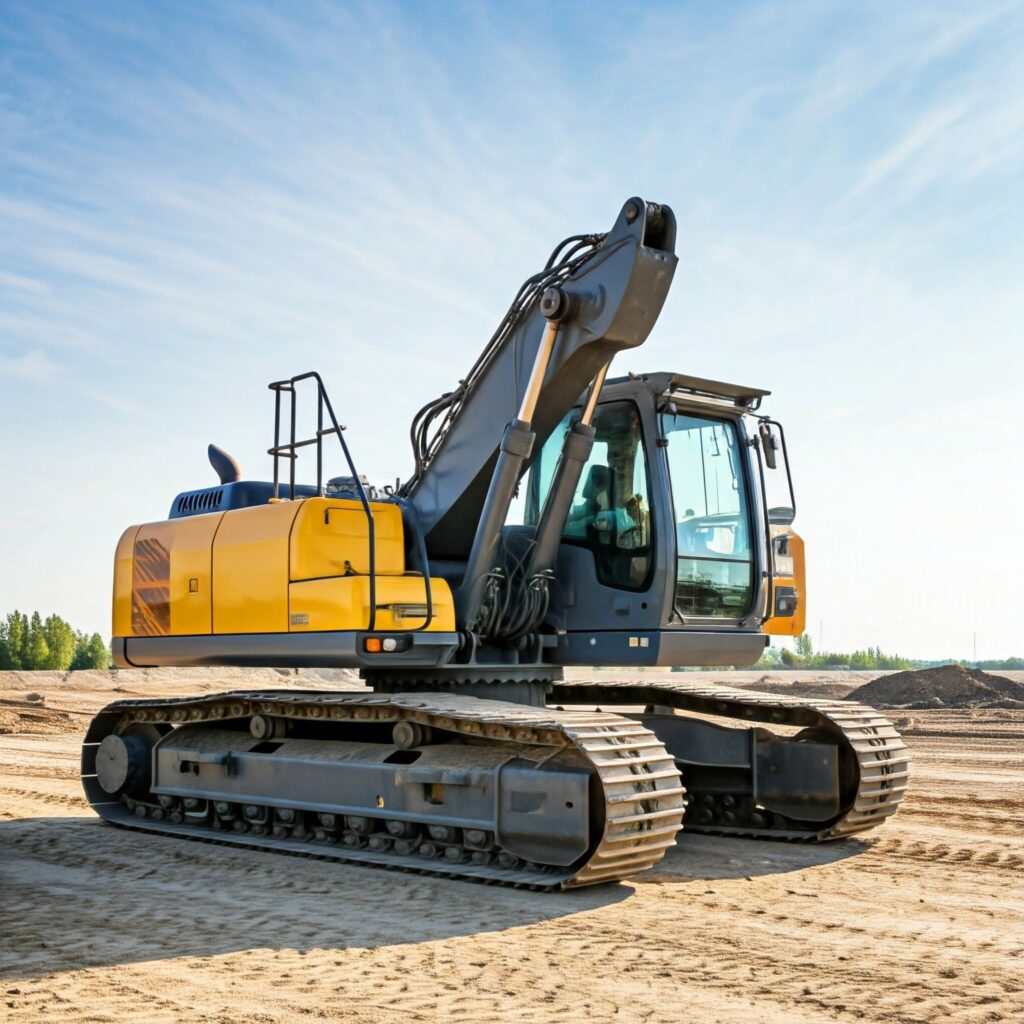Introduction
The heavy equipment industry is evolving rapidly, driven by the need to maximize efficiency, reduce downtime, and enhance sustainability. Emerging technologies, such as telematics and predictive maintenance, are redefining maintenance strategies, extending these advancements to grease management. Simultaneously, understanding the essential properties and appropriate applications of extreme pressure grease is critical for ensuring equipment longevity and reliability.
This article explores the convergence of technology and lubrication science, emphasizing the role of data-driven insights in improving grease management practices while presenting an unbiased comparison of leading grease products to help professionals make informed decisions.
The Role of Telematics in Grease Management
Telematics systems have become integral to modern maintenance strategies, offering a wealth of data that provides actionable insights into equipment performance and lubrication needs.
Key Data Points Collected via Telematics:
- Operating Hours: Tracks equipment usage for precise maintenance scheduling.
- Environmental Conditions: Monitors factors like temperature and humidity, which impact grease performance.
- Equipment Location: Assists in planning maintenance by identifying optimal service intervals based on usage patterns.
- Performance Metrics: Records KPIs such as engine temperature and vibration levels, indicating potential lubrication issues.
For further insight into how telematics benefits construction and heavy equipment operations, you can refer to this Motive blog on Telematics in Construction. It highlights real-world applications of telematics and its contribution to improving efficiency and reducing downtime.
By leveraging this data, operators can tailor maintenance schedules to actual equipment usage rather than relying on fixed intervals, thereby optimizing grease application and reducing unnecessary waste.
Predictive Maintenance: A Smarter Approach
Traditional grease lubrication often results in over-greasing or under-greasing due to fixed maintenance intervals. Predictive maintenance leverages real-time data and analytics to address this inefficiency, ensuring the right amount of lubrication at the right time.
Key Advantages:
- Predict Grease Degradation: Analyzes changing operating conditions to forecast when grease will fail.
- Optimize Greasing Intervals: Customizes re-greasing based on equipment usage, reducing risks of over- or under-lubrication.
- Address Anomalies Early: Detects irregularities, such as increased vibration or heat, to prevent equipment failure.
Properties of Extreme Pressure Grease
While telematics and predictive maintenance provide actionable insights, the selection of the correct lubricant is equally critical. Extreme pressure grease is specifically engineered to withstand severe mechanical stress, shock loads, and high-pressure conditions, making it ideal for demanding applications.
Key Components:
- Base Oils:
- Petroleum-based for general use.
- Synthetic oils (e.g., PAOs, esters) for superior performance under extreme conditions.
- Thickening Agents:
- Soap-based thickeners (e.g., lithium-complex, calcium-sulfonate) enhance thermal stability and load-carrying capacity.
- Performance Additives:
- Anti-wear and friction-reducing agents extend component lifespan and improve reliability.
Practical Applications:
Ball joints, chassis points, universal joints, fifth wheels, bearings, and bushings. The choice of grease depends on the required viscosity and temperature performance.

Performance Comparison of Leading Greases
To illustrate how extreme pressure greases vary in performance, here is a comparison of three products commonly used in heavy equipment maintenance. Each has been formulated for demanding applications but employs unique properties that cater to specific needs.
| Brand and Product | Key Features |
| Mobilgrease 462 Moly | – Based on refined mineral oil and stabilized with a lithium thickener system. |
| – Contains 3% molybdenum disulfide for enhanced load-carrying capacity and wear protection. | |
| – Includes extreme-pressure and oxidation resistance additives for harsh environments. | |
| – Provides rust protection and maintains performance in demanding applications. | |
| Kendall® SHP Grease | – Utilizes a calcium sulfonate thickener, incorporating semi-synthetic composition. |
| – Offers excellent resistance to water, salt, and corrosion, making it ideal for marine-related applications. | |
| – Exhibits high thermal stability and shear stability, ensuring lubrication even at elevated temperatures or under stress. | |
| – Maintains performance under high shear forces and exposure to water. | |
| AMSOIL NLGI #2 Polymeric Off-Road Grease | – 100% synthetic base oils provide enhanced durability in extreme conditions. |
| – Contains 5% molybdenum disulfide, offering exceptional impact resistance and wear protection. | |
| – Resists water washout, reduces grease ejection, and provides extended service intervals, cutting down on maintenance frequency. | |
| – Strong adhesion and cohesion properties result in reliable film strength on greased components. |
This comparison highlights the strengths and specialized features of each product, helping operators select the ideal grease for their specific equipment and applications.
Data Analytics: Unlocking the Power of Information
Telematics generates vast amounts of data, but actionable outcomes depend on robust analytics. Advanced tools can:
- Correlate operating conditions with grease degradation.
- Predict failures with greater accuracy through machine learning models.
- Develop custom maintenance schedules based on unique equipment profiles.
For instance, operators can use these insights to detect early signs of grease contamination in critical components, like bearings or joints, and address issues before they lead to downtime.
Benefits of Condition-Based Grease Lubrication
Integrating technology and high-performance grease into a maintenance strategy offers significant advantages:
- Minimized Downtime: Early detection prevents unexpected breakdowns.
- Extended Equipment Lifespan: Optimal lubrication reduces wear and tear.
- Lower Operational Costs: Streamlined greasing intervals eliminate unnecessary activities.
- Sustainability Gains: Reduced waste contributes to environmentally conscious operations.

Challenges and Considerations
Despite its benefits, implementing telematics and predictive maintenance is not without hurdles:
- Data Security: Protecting sensitive information is crucial.
- System Integration: Ensuring compatibility across platforms can be complex.
- Training and Adoption: Maintenance teams require technical expertise to leverage new systems effectively.
Proper planning and ongoing improvements will help overcome these challenges, unlocking the full potential of data-driven grease management.
Conclusion
The integration of telematics, predictive maintenance, and advanced lubricants like AMSOIL NLGI #2, Mobilgrease 462 Moly, and Kendall SHP Grease is revolutionizing grease management. These approaches ensure efficient maintenance schedules, reduce downtimes, and sustain equipment longevity.
By combining cutting-edge analytics with carefully selected lubricants, operators can achieve optimal performance while maintaining cost efficiency and environmental responsibility. This comprehensive approach reflects the future of grease management, emphasizing both technological advancements and practical product choices.
For more details about these products, you can visit their official product pages:
